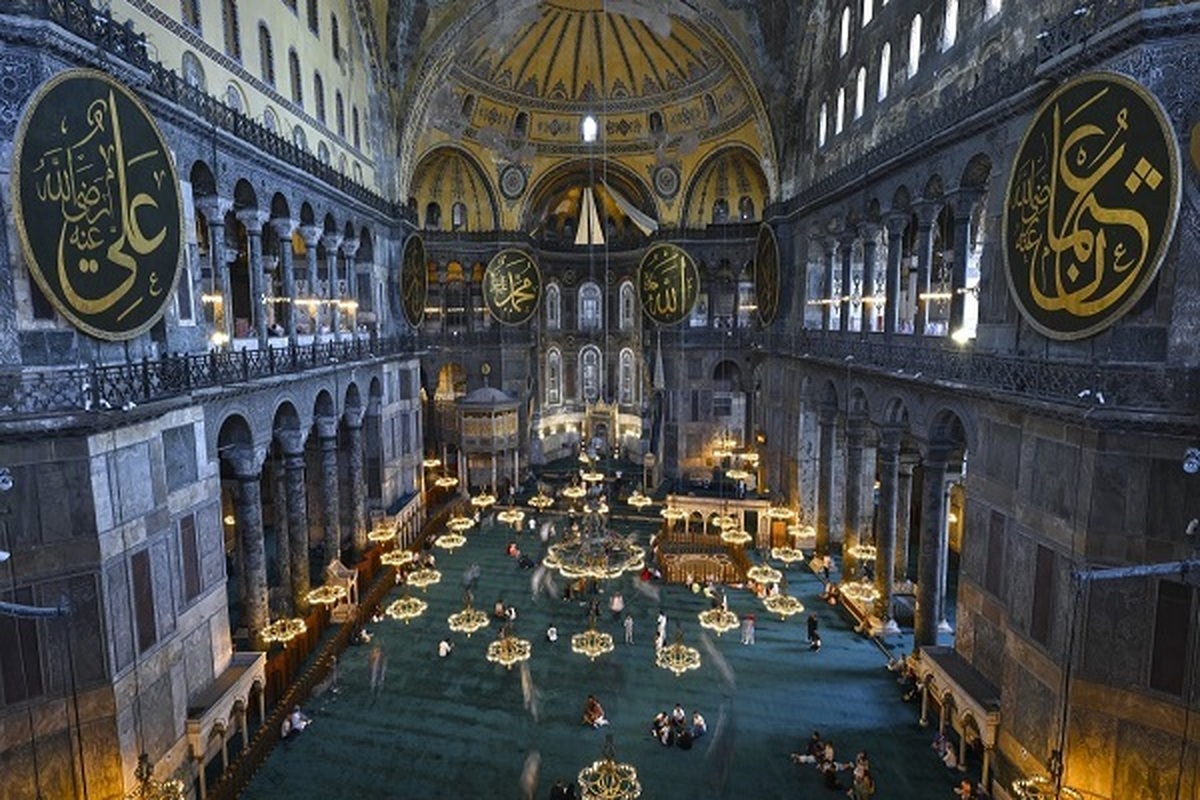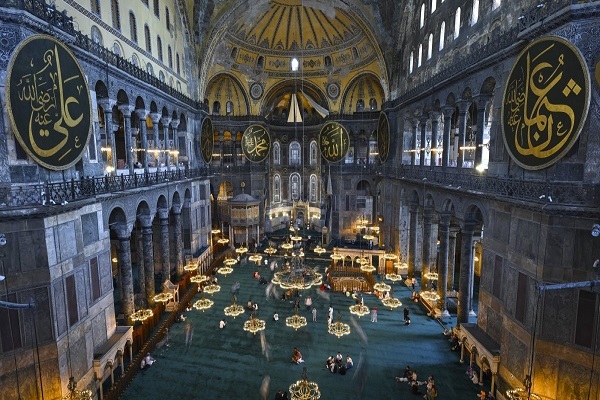Istanbul’s Iconic Mosque Embraces AI, Modern Tech to Enhance Visitor Experience


Standing for 15 centuries and rebuilt three times in history, Hagia Sophia now integrates advanced technologies to enhance the visitor experience while protecting its sacred and historic integrity with AI-supported systems.
Originally converted into a mosque following the conquest of Istanbul, Hagia Sophia was repurposed as a museum by a Council of Ministers decree in 1934. After an 86-year interval, it was reopened for worship as a mosque by presidential decree on July 10, 2020. Since then, extensive efforts have been made to preserve its historical fabric and strengthen security through the use of modern technology and AI applications.
The General Directorate of Foundations, under the Ministry of Culture and Tourism, has implemented a series of measures to ensure both local and international visitors feel safe and comfortable, while also preventing any damage to the mosque’s physical structure.
Levent Çetin, deputy director of the Istanbul Foundations' first region, said Hagia Sophia was reopened to worship five years ago and is currently supported by a team of approximately 300 personnel. This team includes security and cleaning staff, as well as coordinators dedicated to maintaining visitor comfort.
Çetin noted that a comprehensive visitor management plan has been in place since Jan. 15, 2020. “We have opened the gallery floor to visitors by implementing physical security measures to safeguard the architecture, mosaics and other historically significant works of art,” he explained. “With the visitor management system, we have separated entry and exit routes for those coming for worship and sightseeing. Long queues at the entrance are now a thing of the past.”
Çetin pointed out that it is now much easier to enter and exit the Hagia Sophia Grand Mosque for worship, emphasizing that visitors can now explore the mosaics and other sections in a more qualified manner.
He emphasized that an audio narration system in 23 languages was installed in the mosque with the opening of the gallery floor on Jan. 15, 2024.
He also continued: “With this audio system, all our guests can listen to information about the mosaics in Hagia Sophia and structural elements such as the library added during the Ottoman period and the muazzin's pulpit in 23 different languages using their cell phone headphones or any other headphone system they can obtain from outside."
"Visitors can now listen to these explanations in their own languages in a much more qualitative manner, while our guests who are praying can now perform their prayers in a much more comfortable and qualitative manner without disrupting the prayer environment," he added.
Çetin said they have received positive feedback from visitors about the adjustments and noted that with fewer people, the mosque felt less crowded.
"We revised our security system and converted it into an AI-supported system. The system can provide warnings in various fields and offer support to personnel. By increasing the number of cameras and integrating AI support, the system was able to prevent potential security issues inside the mosque," he added.
"When a visitor attempts to enter the parts of the mosque that are closed to visitors, the system automatically notifies the screens of our relevant personnel that there is such a problem. We are increasing the response speed of our active personnel inside the mosque. This has been a serious support to our personnel working for the protection of the structure,” he assured.
Read More:
Çetin stated that restoration work on the mosque is continuing, noting that they have completed the first phase of work on the mosque's comprehensive projects.
On creating a digital twin, Çetin explained: "In addition, we have completed the restoration of the tombs, the sıbyan mektebi (Ottoman-era primary school) and the muvakkithane (Ottoman timekeeper’s chamber) located in the courtyard of our mosque. Following comprehensive projects, our Science Council also decided to intervene in static issues, particularly in the main dome and side domes of our mosque."
"As a result of these decisions, we have begun work on the dome and side domes. We had a project related to the minaret of Bayezid II, which is nearing completion. Our restoration work will continue gradually," he concluded.
Source: dailysabah.com



